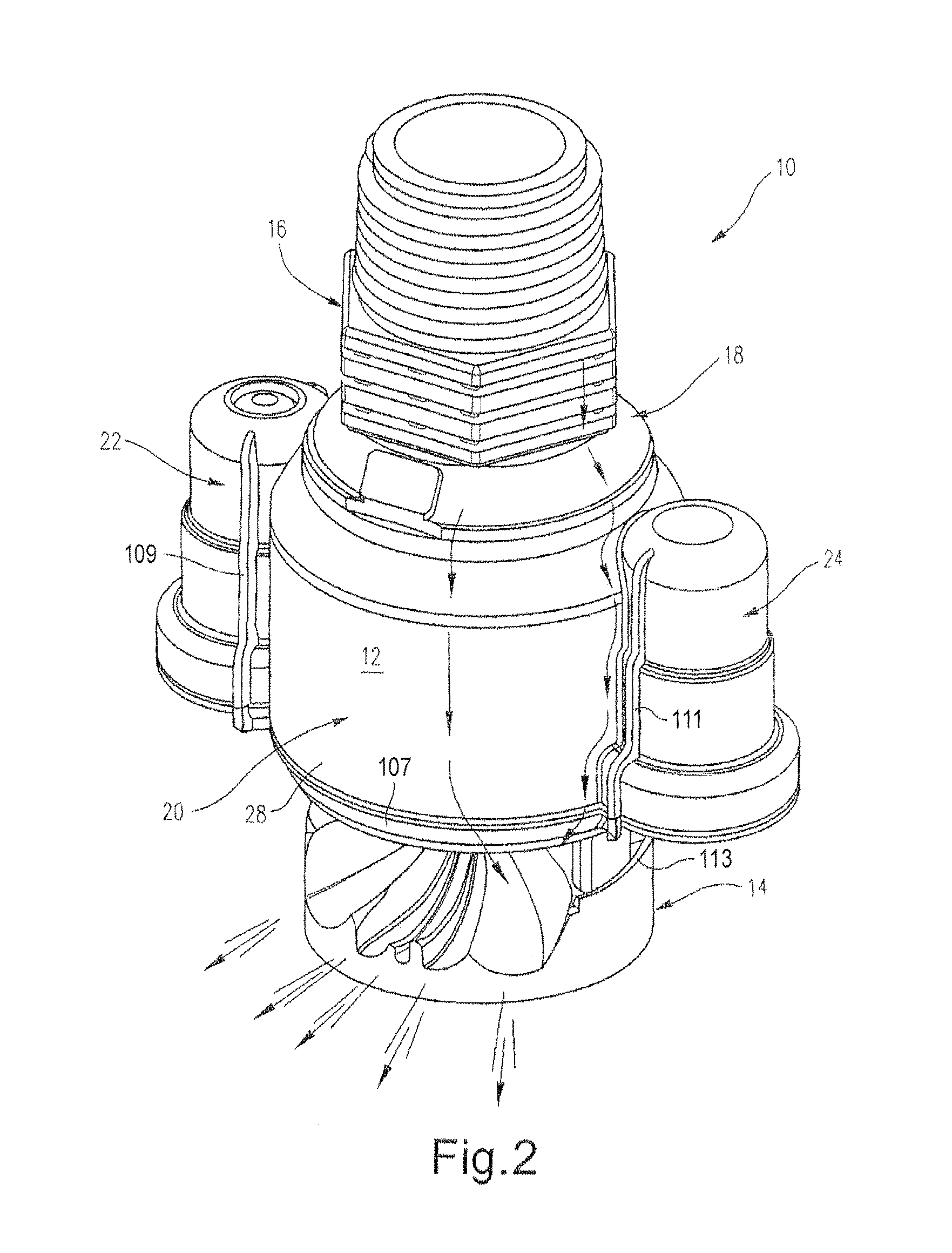Rotary strut sprinkler
a rotary strut and sprinkler technology, applied in the direction of spraying apparatus, spraying apparatus, movable spraying apparatus, etc., can solve the problems of high seal drag and fluid damage, and achieve the effect of low seal drag, low drive torque, and relatively low available drive torqu
- Summary
- Abstract
- Description
- Claims
- Application Information
AI Technical Summary
Benefits of technology
Problems solved by technology
Method used
Image
Examples
Embodiment Construction
[0032]With reference initially to FIGS. 1 to 3, a sprinkler 10 in accordance with an exemplary and nonlimiting embodiment of this disclosure includes a sprinkler body housing 12 that supports a rotatable water-deflection (or distribution) plate 14 at one end thereof. An adapter 16 is threaded into the sprinkler body at the opposite end thereof, with a replaceable nozzle 18 sandwiched between the adapter and the sprinkler body. The sprinkler body housing 12 includes a substantially cylindrical center body portion 20 and a pair of diametrically opposed, smaller side housings 22 and 24.
[0033]With reference especially to FIG. 3, the center body portion 20 of the sprinkler is formed with an inner cylindrical wall 26, spaced radially and concentrically inwardly of an outer cylindrical wall 28. The inner cylindrical wall 26 is formed with an upper cylindrical wall portion 30 and a lower cylindrical wall portion 32, the lower wall portion 32 having a diameter less than the upper wall portio...
PUM
 Login to View More
Login to View More Abstract
Description
Claims
Application Information
 Login to View More
Login to View More - R&D
- Intellectual Property
- Life Sciences
- Materials
- Tech Scout
- Unparalleled Data Quality
- Higher Quality Content
- 60% Fewer Hallucinations
Browse by: Latest US Patents, China's latest patents, Technical Efficacy Thesaurus, Application Domain, Technology Topic, Popular Technical Reports.
© 2025 PatSnap. All rights reserved.Legal|Privacy policy|Modern Slavery Act Transparency Statement|Sitemap|About US| Contact US: help@patsnap.com



